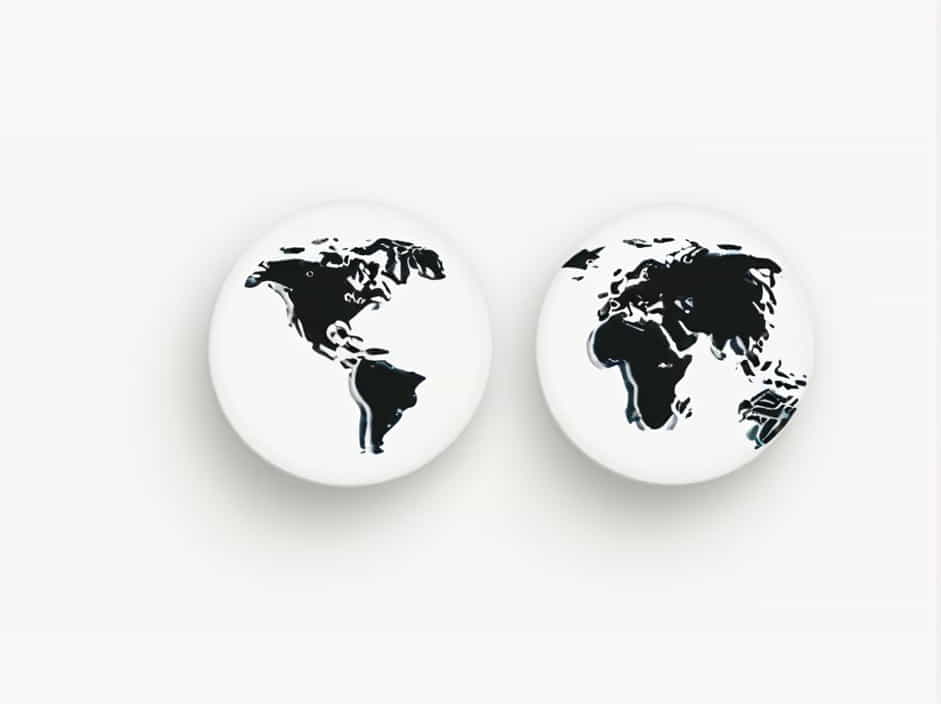Pangaea was a supercontinent that existed around 300 million years ago during the late Paleozoic and early Mesozoic eras. It was a massive landmass where all Earth’s continents were joined together before they gradually drifted apart due to plate tectonics.
The formation of Pangaea was primarily due to the collision of two major landmasses: Laurasia in the north and Gondwana in the south. These two ancient continents played a crucial role in shaping the Earth’s geological history.
This topic will explore how Laurasia and Gondwana formed Pangaea, the process of their collision, and the impact of this supercontinent on Earth’s climate, ecosystems, and evolution.
What Were Laurasia and Gondwana?
Before Pangaea existed, Earth’s landmasses were divided into two large supercontinents: Laurasia in the Northern Hemisphere and Gondwana in the Southern Hemisphere.
1. Laurasia: The Northern Supercontinent
Laurasia was the northern part of Pangaea and included the landmasses that would later become North America, Europe, and Asia (excluding India).
- It formed as a result of the breakup of an earlier supercontinent called Rodinia around 1 billion years ago.
- It was separated from Gondwana by the Tethys Ocean before they collided to form Pangaea.
- Laurasia’s collision with Gondwana contributed to the formation of the Appalachian Mountains in North America and the Ural Mountains in Eurasia.
2. Gondwana: The Southern Supercontinent
Gondwana was the larger of the two continents and included South America, Africa, Antarctica, Australia, the Indian subcontinent, and the Arabian Peninsula.
- It originally formed as part of Rodinia before becoming an independent supercontinent.
- Gondwana’s massive landmass played a significant role in Earth’s climate, ocean currents, and biological evolution.
- It contained vast coal deposits, indicating that large swampy forests covered much of its surface.
How Laurasia and Gondwana Formed Pangaea
The formation of Pangaea was a slow and complex process driven by plate tectonics, the movement of Earth’s lithospheric plates.
1. Continental Drift and Plate Tectonics
- Earth’s tectonic plates move due to the heat from the Earth’s core, which creates convection currents in the mantle.
- Over millions of years, the continents drifted, collided, and merged, eventually forming a single supercontinent-Pangaea.
- The Caledonian and Hercynian orogenies were major mountain-building events that occurred as Laurasia and Gondwana moved closer together.
2. Closure of the Tethys Ocean
- The Tethys Ocean separated Laurasia from Gondwana.
- As the plates moved, the ocean between them gradually closed.
- The collision of Laurasia and Gondwana led to the formation of mountain ranges such as the Appalachians and the Atlas Mountains.
3. Formation of Pangaea
- By the Carboniferous period (around 300 million years ago), Laurasia and Gondwana had fully merged to form Pangaea.
- The Ural Mountains were created when the eastern edge of Laurasia collided with Siberia.
- This massive landmass stretched from pole to pole and was surrounded by a single global ocean called Panthalassa.
The Climate and Ecosystems of Pangaea
The formation of Pangaea drastically changed Earth’s climate and ecosystems.
1. Extreme Climate Conditions
- Pangaea’s interior was arid and desert-like due to its vast size and distance from the ocean.
- The coastal regions experienced monsoon-like conditions, with seasonal rainfall.
- Ice sheets covered parts of Gondwana, especially in what is now Antarctica and South America.
2. Impact on Evolution and Biodiversity
- Pangaea allowed for the spread of early reptiles, amphibians, and insects across the entire landmass.
- Large coniferous forests dominated much of the landscape, contributing to the formation of coal deposits.
- The connected landmass helped early therapsids (ancestors of mammals) and archosaurs (ancestors of dinosaurs) to evolve and migrate.
The Breakup of Pangaea
Pangaea did not last forever. Around 200 million years ago during the Jurassic period, it began to break apart due to tectonic forces.
1. Formation of the Atlantic Ocean
- A rift developed between Laurasia and Gondwana, creating the Atlantic Ocean.
- The separation of these landmasses led to the modern arrangement of continents.
2. Evolution of New Landmasses
- Laurasia eventually split into North America, Europe, and Asia.
- Gondwana fragmented into South America, Africa, India, Antarctica, and Australia.
- These changes influenced ocean currents, climate, and the evolution of new species.
Why Understanding Pangaea Matters
The study of Pangaea and its formation provides valuable insights into Earth’s geological history.
1. Helps Understand Plate Tectonics
- The movement of continents continues today, shaping our world through earthquakes, volcanic activity, and mountain formation.
- Studying Pangaea helps scientists predict how continents might move in the future.
2. Explains Fossil Distribution
- Similar fossils of plants and animals are found on continents that are now separated by vast oceans.
- This supports the idea that these landmasses were once connected.
3. Provides Insights into Climate Change
- The climate changes that occurred during Pangaea’s time help scientists understand modern global warming and environmental shifts.
The formation of Pangaea was a defining event in Earth’s history, bringing together Laurasia and Gondwana into a single landmass. This supercontinent shaped the evolution of life, altered climate patterns, and set the stage for the continents we know today.
Although Pangaea eventually broke apart, its legacy remains in the geological formations, fossil records, and scientific discoveries that continue to shape our understanding of Earth’s dynamic history.
